A soldering station is probably one of the most important tools in an electronics workshop. In the more than 40 years that I have been working with soldering irons, I have used quite a few models. Back then© (between 1987 and 1994) as a radio television technician, stations from Ersa and Weller were the standard and all of them rarely exceeded 60 watts of power. At that time, however, the electronics world still looked a little different: Double-sided PCBs were the exception, SMD components were not yet commonplace anyway (apart from a few MELFs) and lead-free solder was also unknown. People only knew what was offered in the suppliers’ catalogues and that was mostly from Weller and Ersa.
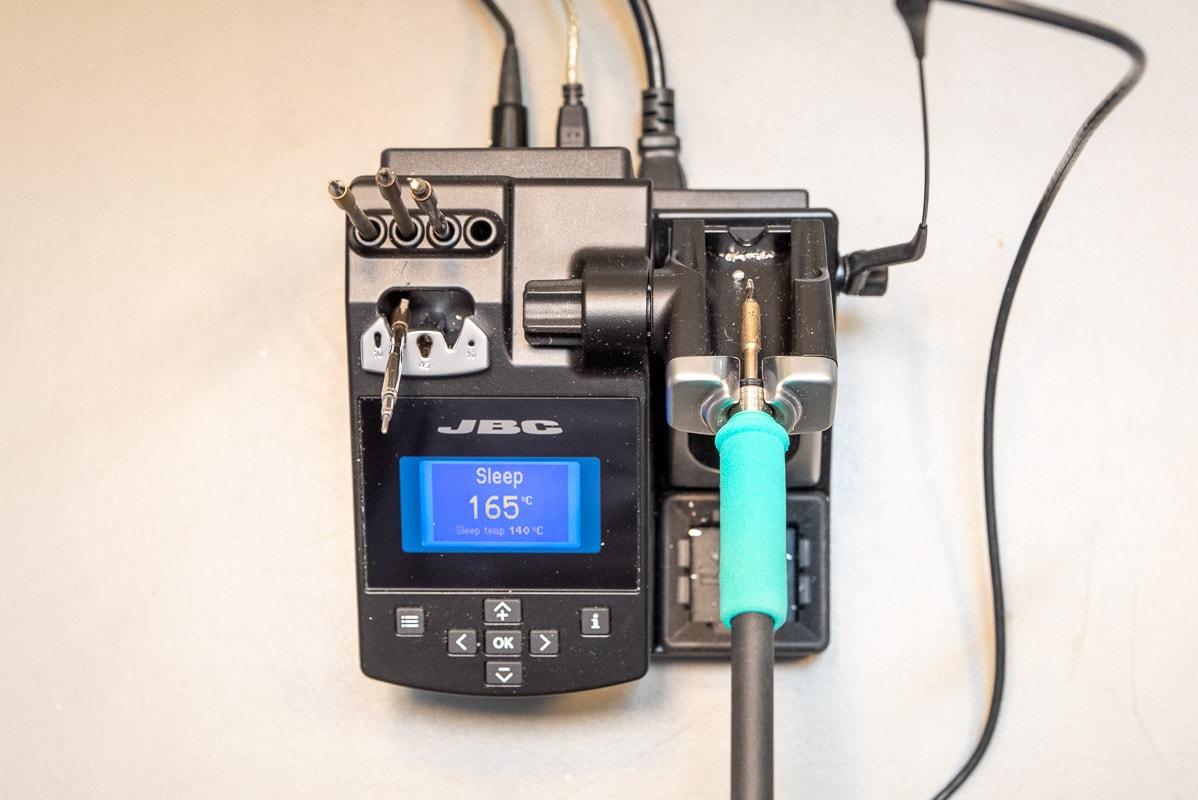
I used to use an Ersa Analogue 60 and an ancient Weller WTCP (“Magnastat”) soldering station, but unfortunately they were no longer (or never have been …) up to the task. This includes, for example, being able to use different soldering tips quickly and easily. In addition, they often lacked the necessary power and the heat-up time was miserably long. When things had to be done quickly, I tended to use the inexpensive TS100 soldering iron, but its power is also limited. So I needed a soldering station in the 150 watt class.
As I was prepared to spend a little more money, I not only looked at the i-Con models from Ersa, but also at soldering stations from JBC, Hakko, Weller and Metcal. Soldering stations from Chinese manufacturers such as Yihua and their identical offshoots from Conrad, ELV & Co. were ruled out.
In the end, my selection was left with models from Metcal and JBC, which met my requirements in terms of performance, flexibility and speed. However, it was JBC’s overall concept that convinced me the most:
- Fast, convenient and safe soldering tip change without tools
- Huge selection of soldering tip shapes (over 160 for the C245 model)
- Extremely fast heating and standby function (extends the tip’s service life)
- High and stable heat output
- Good supply situation for soldering tips and spare parts
- Convenient soldering iron with very flexible cable (extremely important to me!)
- Comparatively favourable price (in its class)
- Best ratings in comments and forums
The JBC CB-2 is currently priced at around €370 without a soldering tip and €390 with one. This makes the JBC around €40 cheaper than an Ersa i-Con and a good €140 cheaper than a comparable soldering station from Metcal.
The soldering station, together with 5 soldering tips, was delivered quickly by the electronics mail order company Welectron.
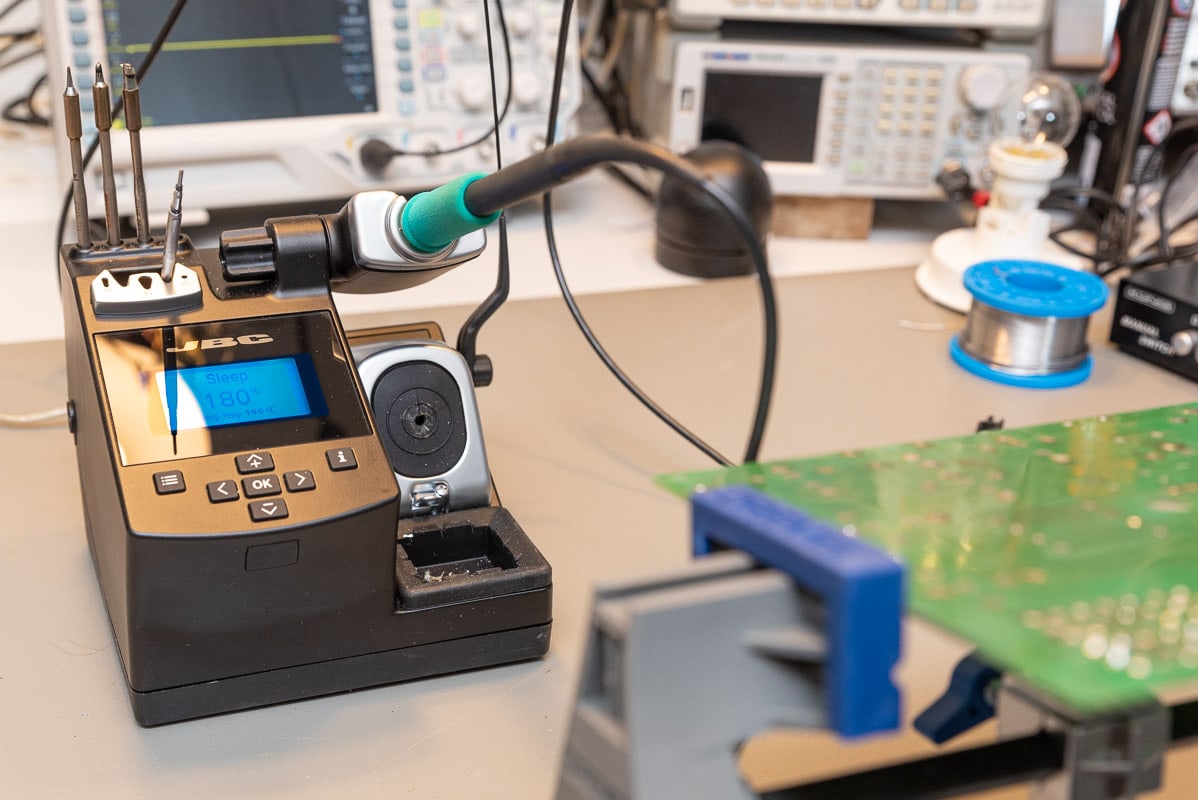
When you unpack the JBC soldering station, you immediately realise that you are dealing with an absolutely professional tool. The base is heavy and excellently made. The soldering iron with its green foam rubber handle is fantastic to hold and the soldering tip is short enough for precise SMD work under the microscope.
After switching on, the JBC soldering station takes just under 7 seconds to boot up and reaches the standby temperature of 150 °C after a further 2 seconds. If you remove the soldering iron, it heats up to 350 °C within 4 seconds! If you put it back in its holder, it is automatically cooled down to the standby temperature again. After an adjustable time, the soldering station then goes into deep sleep at room temperature when not in use. It is therefore no longer possible to forget to switch off the soldering iron.
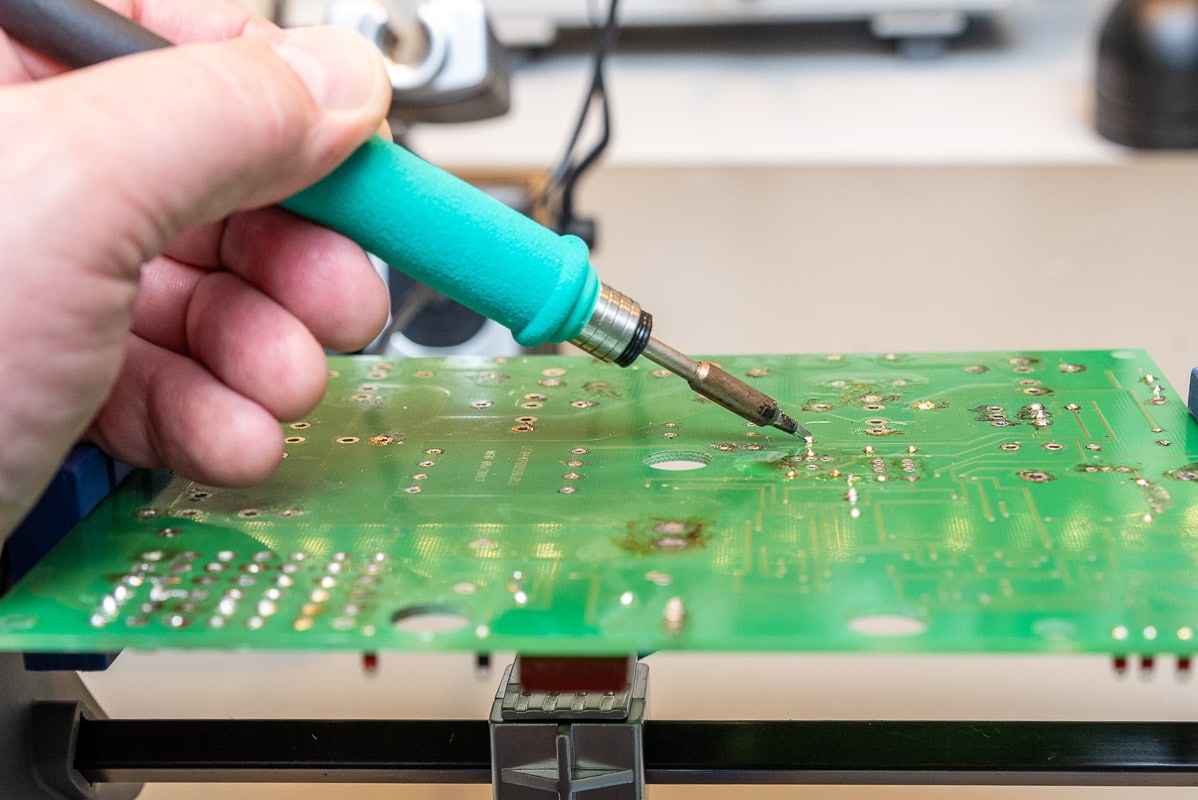
The automatic change between standby temperature and soldering temperature is so fast that it is completely forgotten. By the time you reach the soldering point, it has already reached operating temperature. Alternatively, you can set a period of time for the soldering iron to remain at the set soldering temperature after it has been placed in the holder.
Three different temperatures can be programmed, which can be called up at the touch of a button. I have set these for lead-free soldering and desoldering (350 °C), leaded solder (320 °C) and SMD (lead and lead-free) (290 °C).
With JBC, the soldering tip is also the heating element and temperature sensor. Although this means that the soldering tips are somewhat more expensive, they are also extremely fast and maintain the temperature precisely. This allows you to set low soldering tip temperatures, as these are always reliably available thanks to the rapid readjustment. However, an unnecessarily high temperature significantly reduces the service life of the soldering tip.
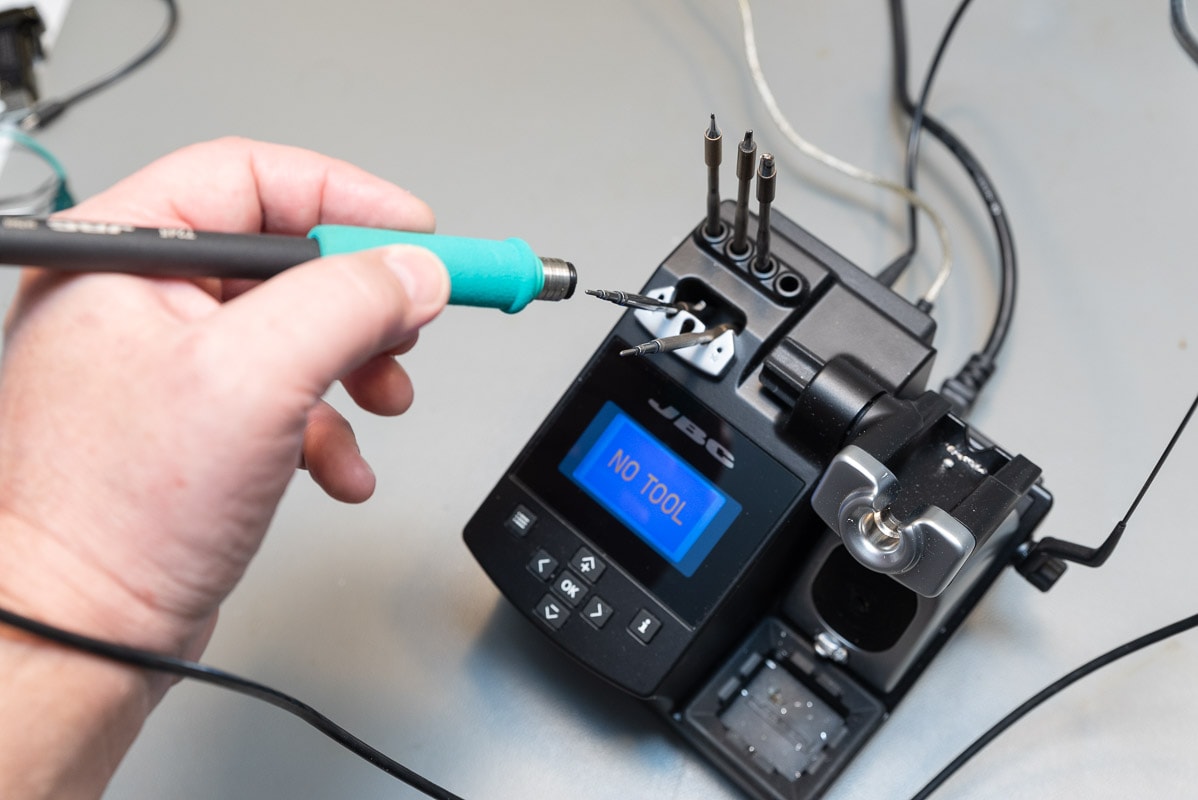
The Ersa i-Con stations, on the other hand, have a heating element with an attached soldering tip, which is why they heat up much longer; changing the soldering tip is very cumbersome and must be done when the soldering iron has cooled down.
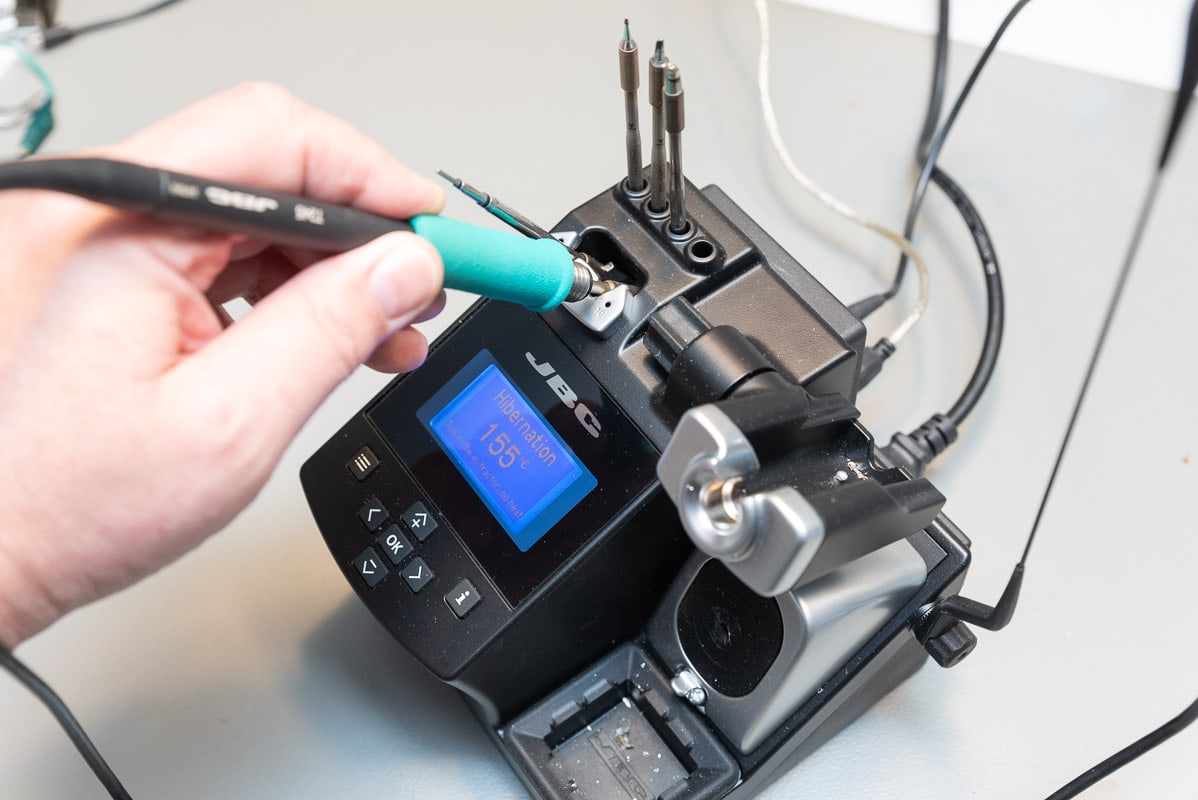
JBC specifies the peak power as 130 watts at 23.5 volts. The station actually pushes this power into the soldering tip during heating. Using a power meter, you can clearly see how quickly and dynamically more power is called up when it is needed. A bar graph on the display shows the current power drawn in per cent.
6 tips for soldering beginners
Always solder at the lowest possible temperature. Excessively high temperatures shorten the service life of the soldering tip, burn the flux and result in poor solder joints.
Lead-free solder: 350 °C
Lead solder (Sn60Pb40): 320 °C
SMD lead-free: 300 °C
The size of the soldering tip should correspond approximately to the size of the solder joint. Larger tip, better temperature transfer.
Large areas or thick cables require large soldering tips. Small SMD components, correspondingly small soldering tips.
Heat the solder joint first and then feed in the solder while the soldering tip is still in position.
Feed the correct amount of solder to the heated solder joint and not to the soldering tip. Solder joints should look concave (no balls or drops).
do not use the soldering iron with pressure or even leverage, as this will damage the iron coating of the soldering tip.
If the temperature is not transferred correctly, the power, soldering tip or temperature are not suitable.
Heat for a very long time as components can be damaged.
Clean the soldering tip regularly before soldering with a metal sponge or slightly damp sponge (distilled water, gentler than metal sponges). Always leave the soldering tip tinned to avoid oxidation.
In case of heavy soiling, use soldering tip cleaner (and only then!)
Do not inhale soldering vapour. If used frequently, use a soldering vapour extractor. Clamp circuit boards and components so that they are securely fixed. Wash your hands after working with leaded solder.
Beware of solder splashes and drops. Keep the workplace tidy and free of flammable materials.
The JBC CD-2 in practice
I was extremely surprised at how big the difference is with the JBC soldering station. Soldering is much quicker and easier. Large ground surfaces are heated effortlessly without having to fry in one place for a long time. Changing the soldering tip from a large bevelled soldering tip to a 0.6 mm pencil tip for SMDs is quick and easy and you don’t have to worry about the soldering tip slipping off or burning yourself. After changing, the working temperature is available in less than 5 seconds.
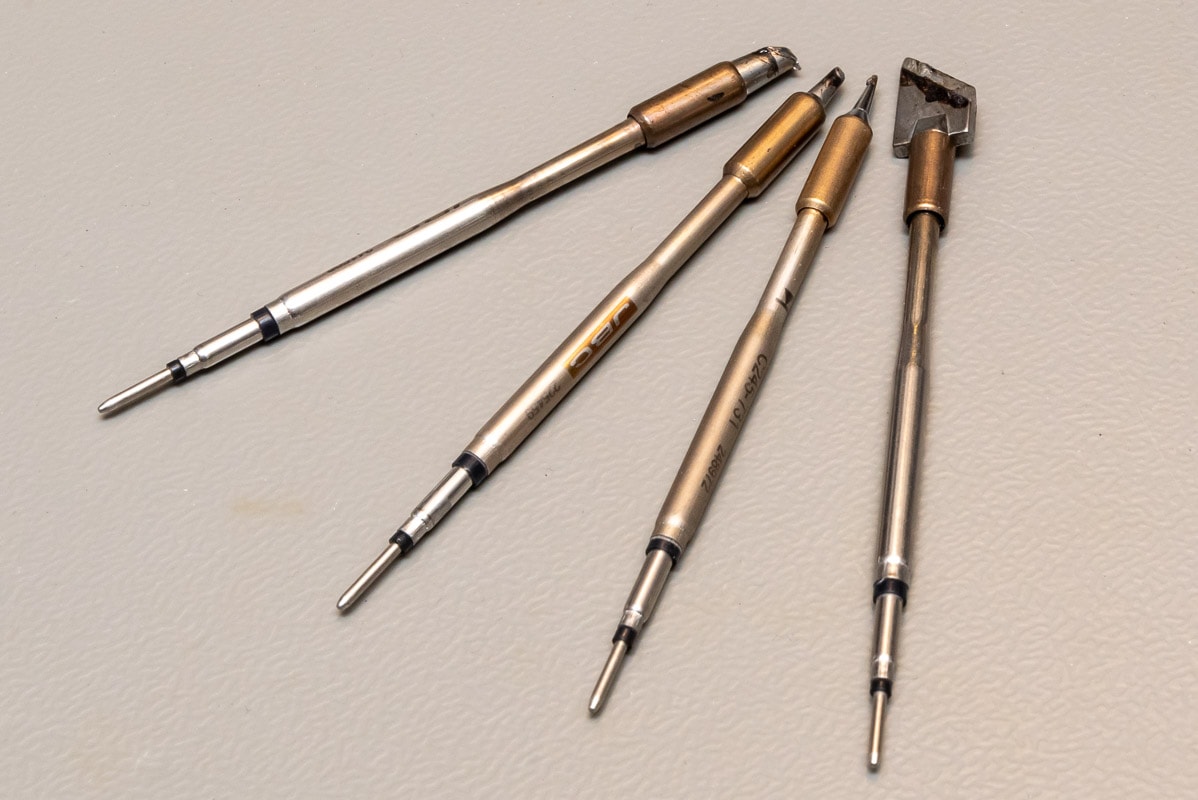
Details such as the rubber-covered brass sponge, which prevents solder splashes, or the adjustable tray with cable suspension show that JBC has put a lot of thought into practical use. This also includes the simple firmware update via the built-in USB port. There is also free “Robot Control” software, which can be used to read out temperatures and edit the configuration on a PC.
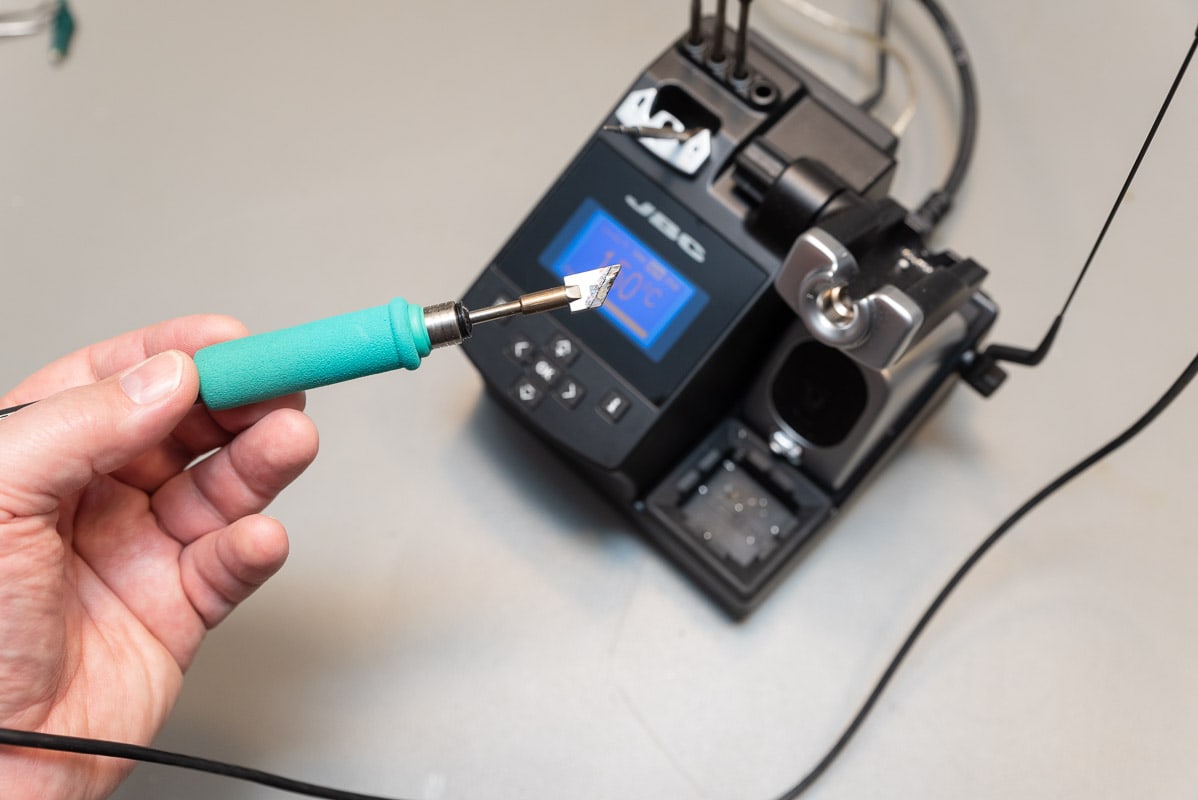
I made the following selection of soldering tips:
- JBC C245-951 bevelled with 3.8 mm for large surfaces and stranded wires
- JBC C245-102 bevelled 2 mm for drag soldering
- JBC C245-160E chisel-shaped with 1.6 mm as E-version for (E)xtended durability – my standard soldering tip
- JBC C245-731 Chisel-shaped with 0.6 mm width for SMDs and very fine work
- JBC C245-955 blade shape with 13 mm length – my absolute favourite for desoldering
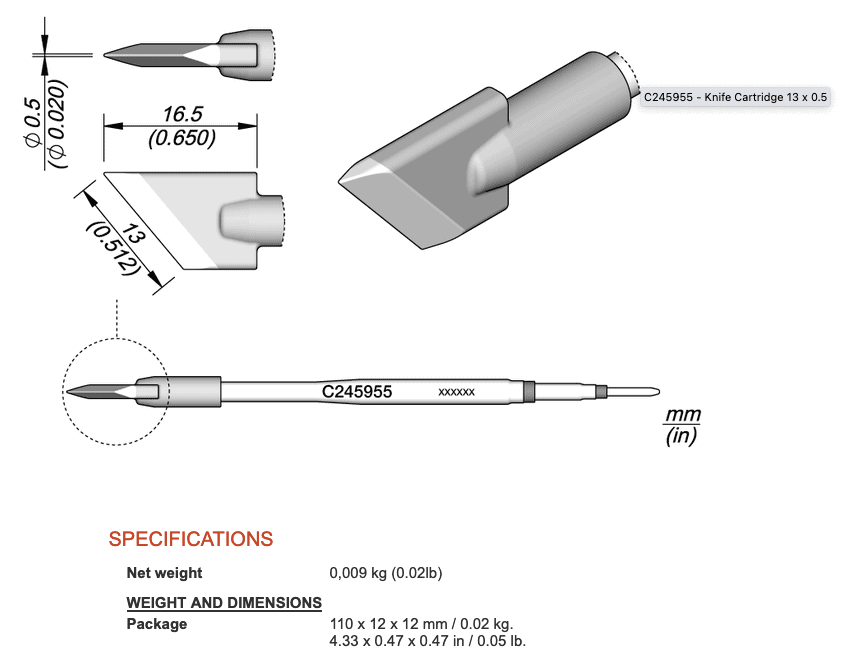
The JBC C245-955 soldering tip is an absolute game changer. Not only can it be used to easily liquefy very large solder joints, it can also be used to quickly and easily desolder components with multiple pins. The blade covers two pins of an electrolytic capacitor, for example, so that it can be easily pulled out. DIP/DIL and 8 or 16 ICs can also be completely heated and lifted on one side.
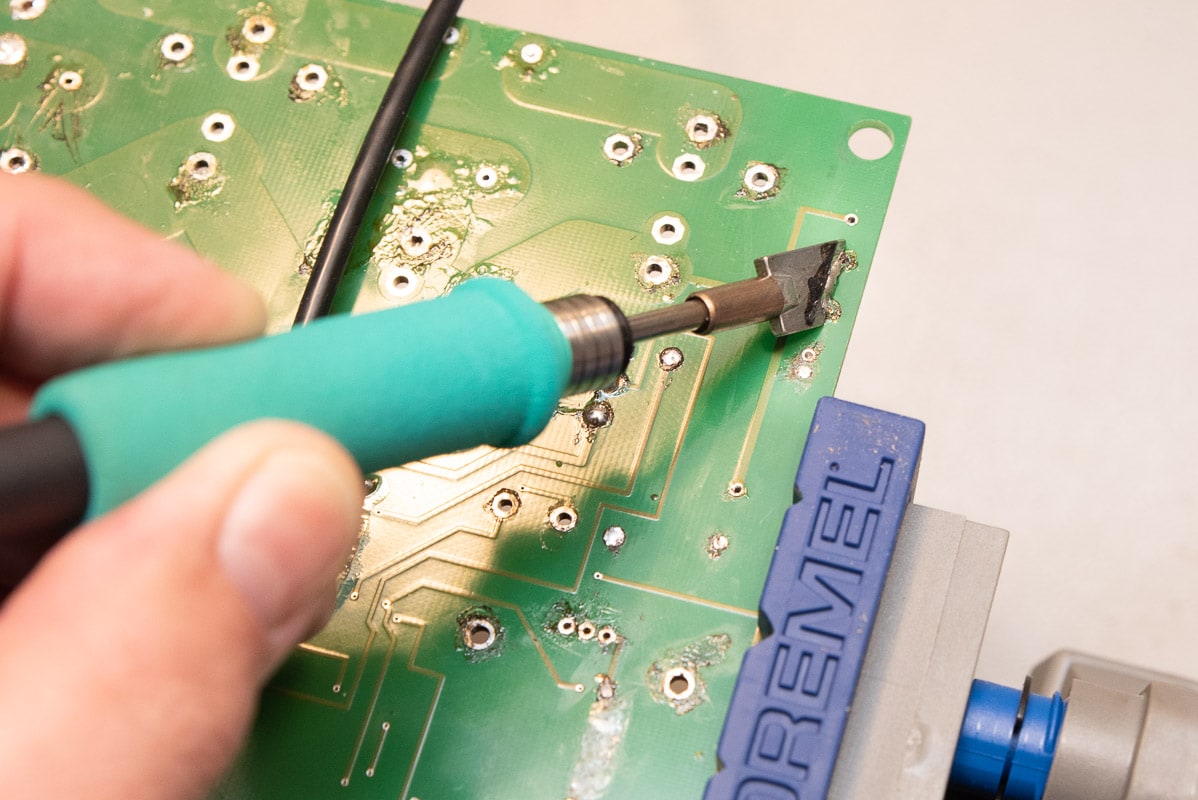
Whereas I used to work with just one soldering tip because it was too complicated to change, I now always use the right tip – because it’s so easy. Pull out the soldering tip with the built-in tool. Insert the new soldering tip from the holder. Done!
Up to 5 soldering tips are always available in the station, plus the one in the handle.
Conclusion
The JBC CD-2 impressively demonstrates what should have been used much earlier. Compared to stations under €200, it opens up a whole new world. What used to be tedious and annoying is now child’s play with the JBC soldering station. Even standard tasks such as simple THT solder joints are quicker and look neater.

Because the selected temperature is always reliably available at the soldering tip, you can work at lower temperatures. This protects the soldering tip, burns less flux and ensures perfect results.
Around 400 euros (with a soldering tip for a soldering station) is no small price to pay for hobby use. However, it is one of the best €400 I have spent on a tool in a long time.
The JBC CD-2BQF is still on offer at Welectron: https://www.welectron.com/JBC-CD-2BQF-Digitale-Loetstation
More info: https://www.jbctools.com/cdb-soldering-product-1605.html


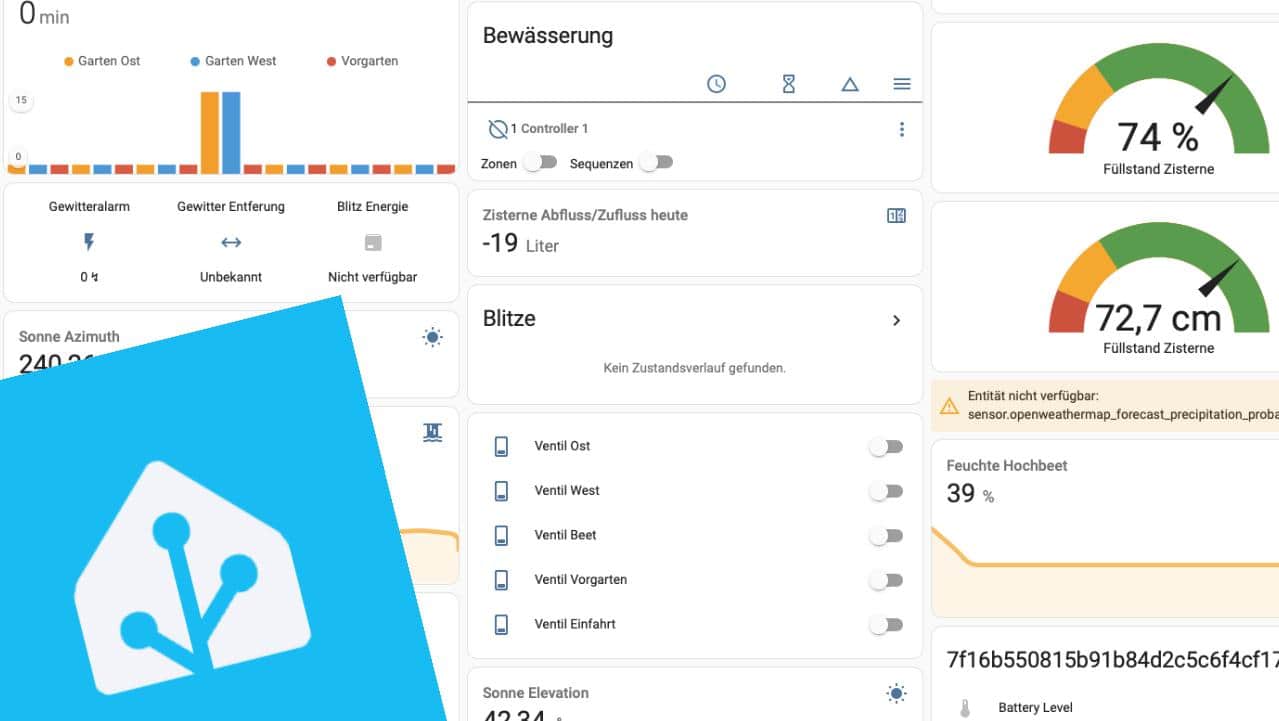

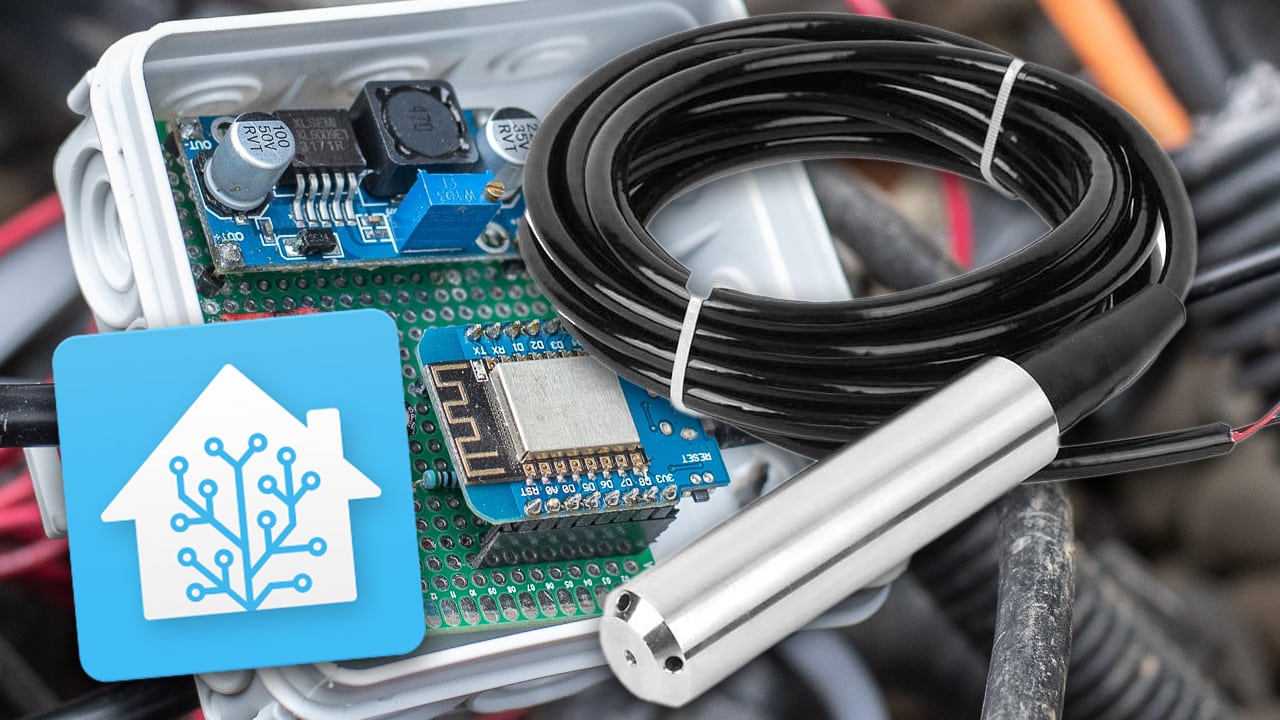
Leave a Reply